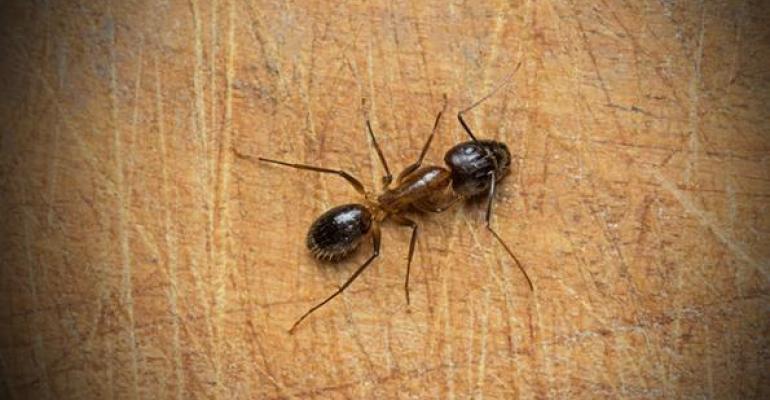For many restaurants, summer is the busiest time of the year. Unfortunately, it’s also prime pest season. As temperatures increase, so do the number of pests, which means restaurants should be prepared for an onslaught of pest pressures. Two pests in particular that can cause grief for restaurants during the warmer months are flies and ants. Part 1 of this article addressed the issue of flies. Here’s a look the second challenge—ants—and a few tricks you can use to help keep them away.
Ants differ from flies in that they don’t transmit dangerous bacteria, nor do they elicit the same “ick” response–usually—but don’t count them out. While some ant problems can be relatively benign, others can be a major nuisance by causing food spoilage and contamination and creating a poor customer perception.
[CHARTBEAT:3]
As the weather warms up, ants can appear in multitudes, drawn inside looking for food, water and shelter. They can enter restaurants through even the smallest cracks and crevices. Ants are social pests, so if you see one, there’s likely more. Plus, when an ant finds a food or water source, it can leave a pheromone trail for the rest of the colony to follow, thus the infamous ant trail.
Ants are tireless, versatile invaders with strong survival skills, so their colonies can be difficult to control. In fact, an established colony can take weeks to treat.
A few key issues usually lead to ant problems: maintenance and sanitation gaps, plentiful and accessible food and water sources and easy entry points. Here are some measures you can take to address these issues and help prevent ants from antagonizing you and your diners this summer:
• If the area around your establishment is landscaped, try to choose plants that are not insect-friendly and keep vegetation trimmed back at least two feet from the building.
• Use weather-resistant sealant to close any cracks, crevices or holes ants may use as entry points around the exterior of the building.
• Install or replace door sweeps and weather stripping on doors and windows and repair any holes in window and door screens.
• Empty trash and recycling bins often and wash them out so food debris doesn’t build up inside.
• Inspect the area surrounding your building regularly to make sure there is no trash that can attract ants.
• Clean up spills immediately.
All of these prevention tips should be implemented as part of an ongoing integrated pest management (IPM) program. IPM is a proactive approach to pest control that uses sanitation, exclusion and mechanical controls to help eliminate the things that attract pests to your restaurant in the first place. A pest management professional can inspect your property and work with you to develop an IPM program tailored to your restaurant’s specific needs and characteristics.
Another factor that can contribute to the success of your pest control program is getting your employees involved. Inform your employees about your IPM program and the threat pests can pose. Encourage them to do their part in keeping the restaurant pest-free. If a pest or pest-conducive condition is sighted, make sure they know who to report the problem to. Ask your pest management provider if they can conduct employee training or provide educational resources to help your team understand their role.
Keep flies and ants off the menu this summer. Work with a pest management professional to regularly inspect and monitor for signs of fly and ant activity and determine the best control techniques for your establishment.
Jennifer Brumfield is a training and technical specialist and board-certified entomologist for Western Pest Services, a New Jersey-based pest management company.





